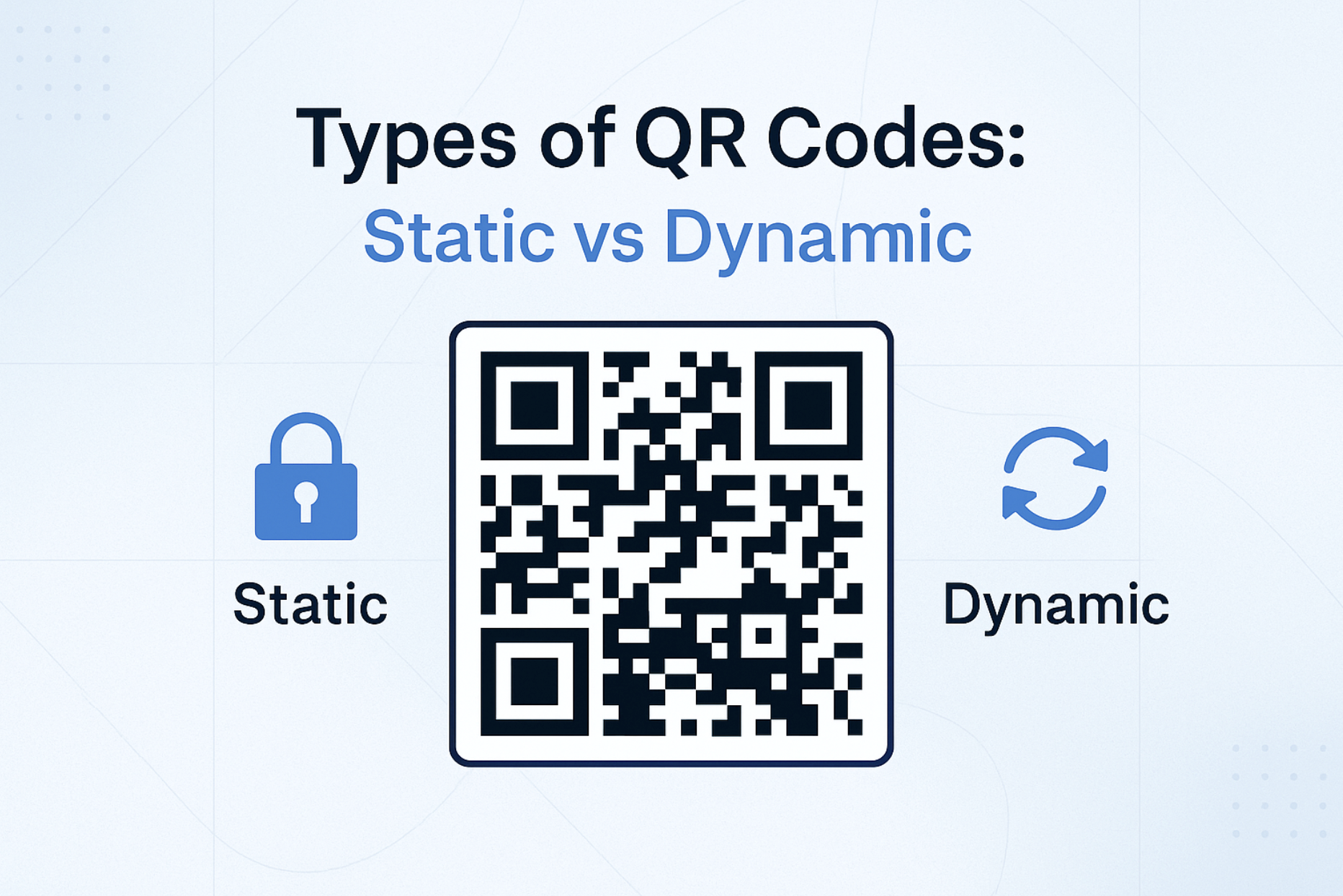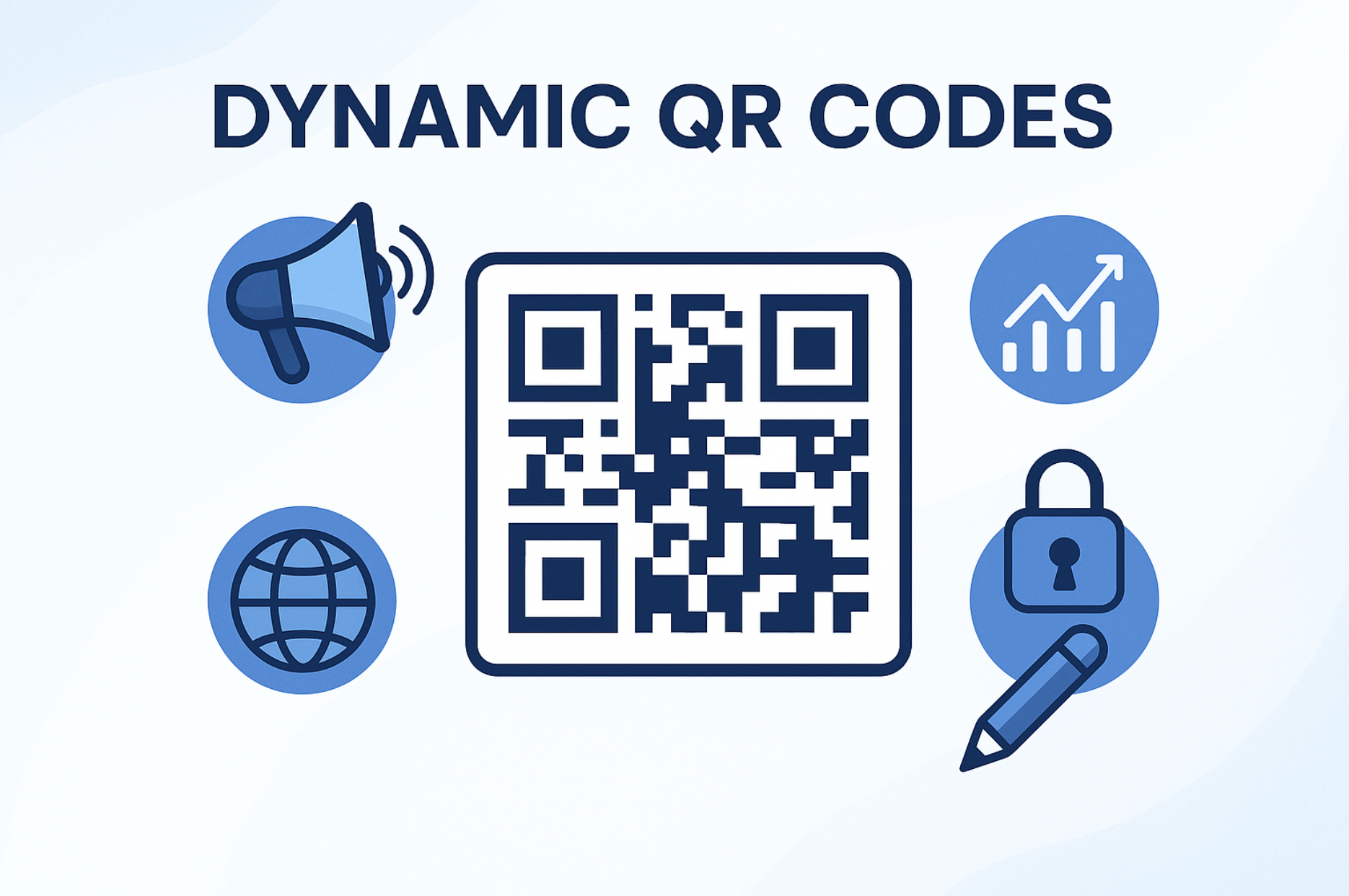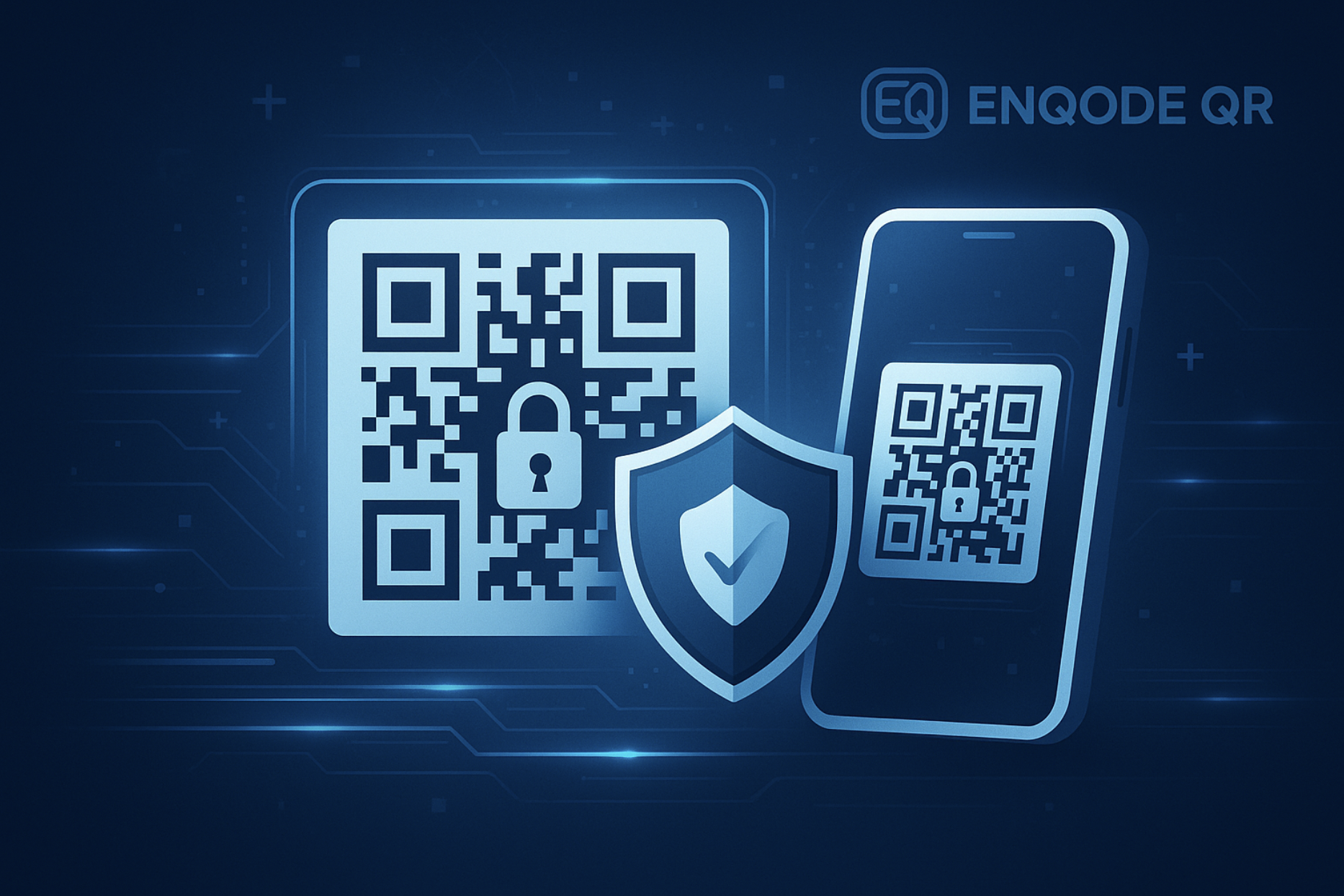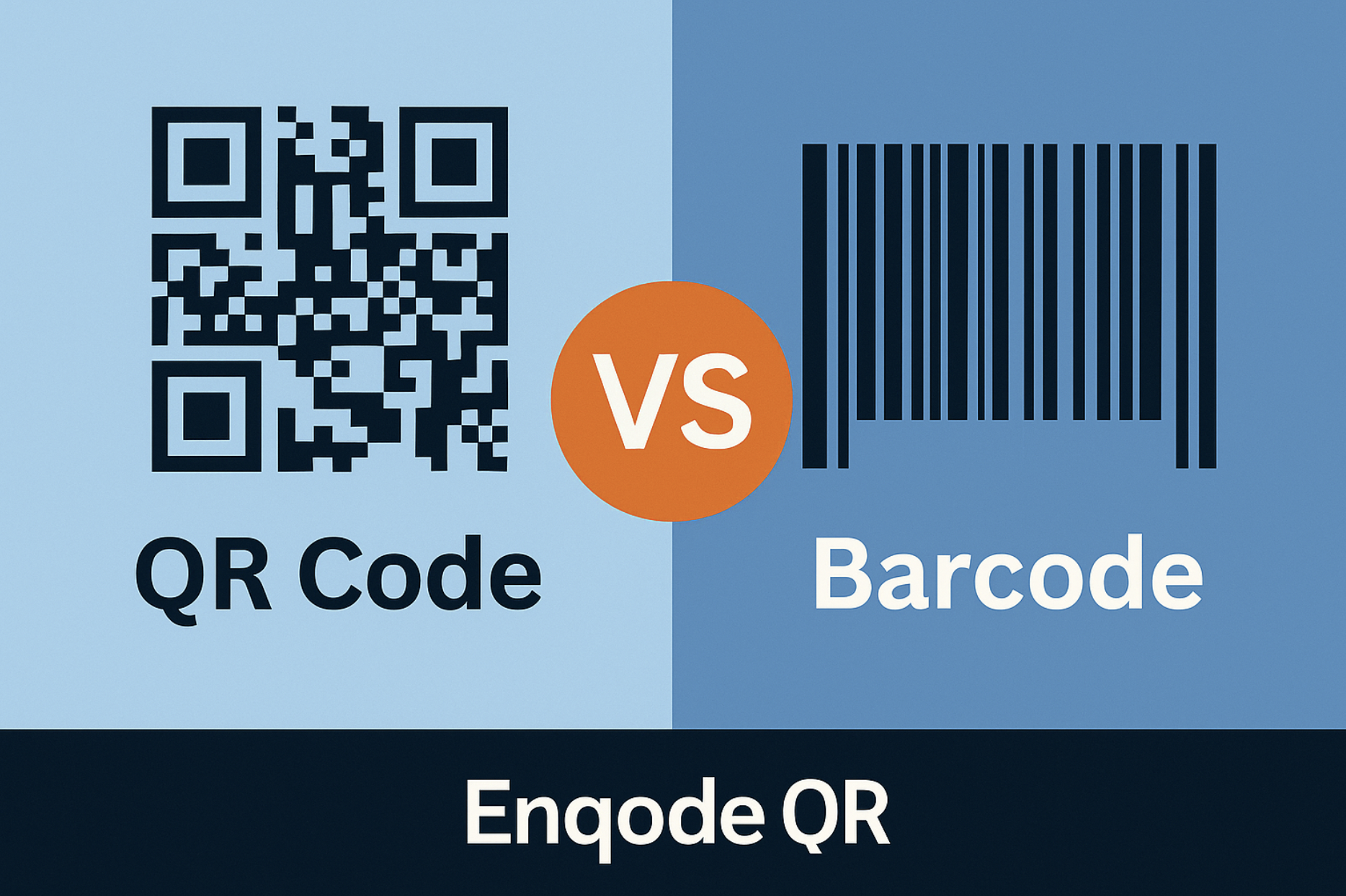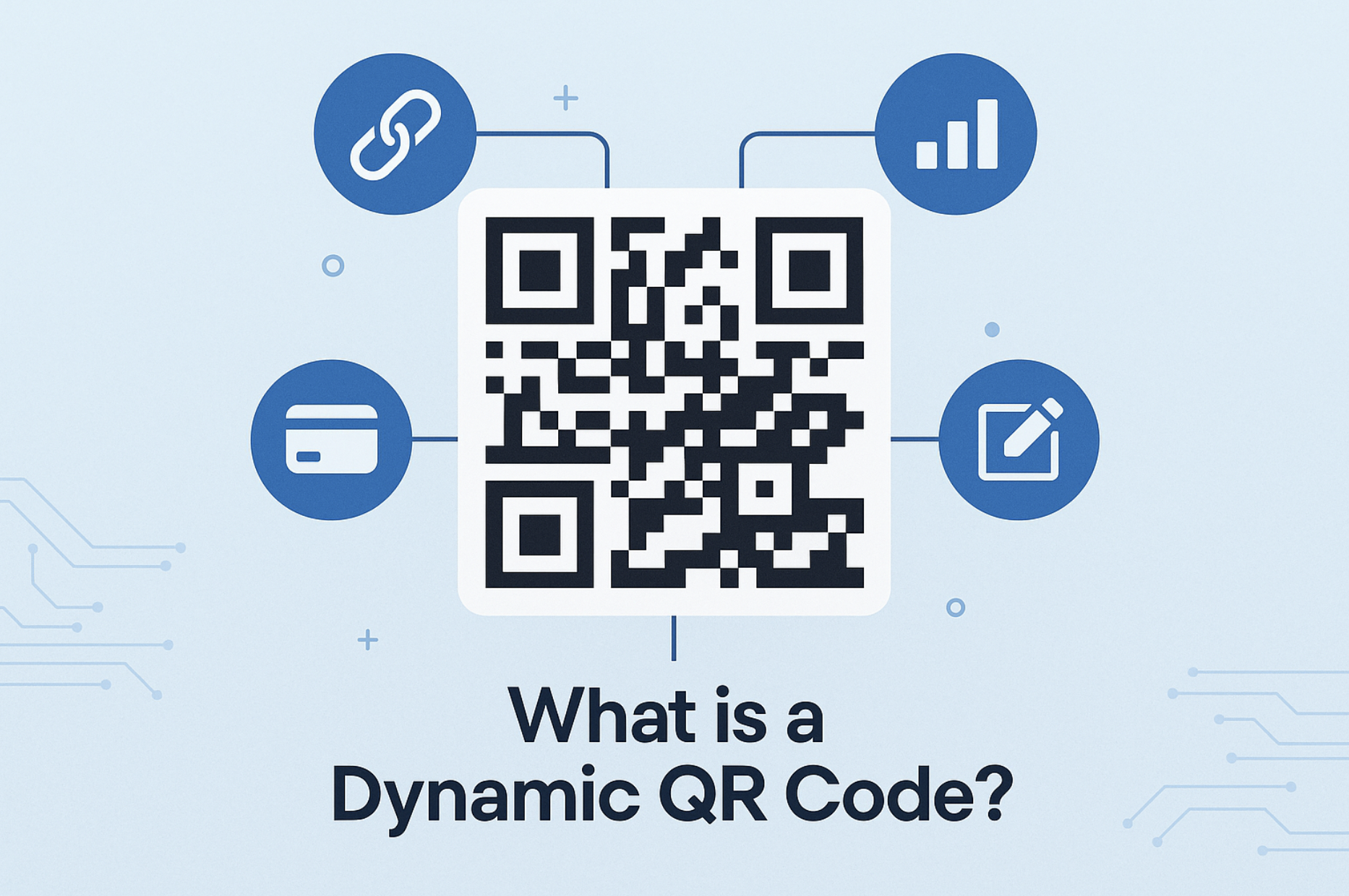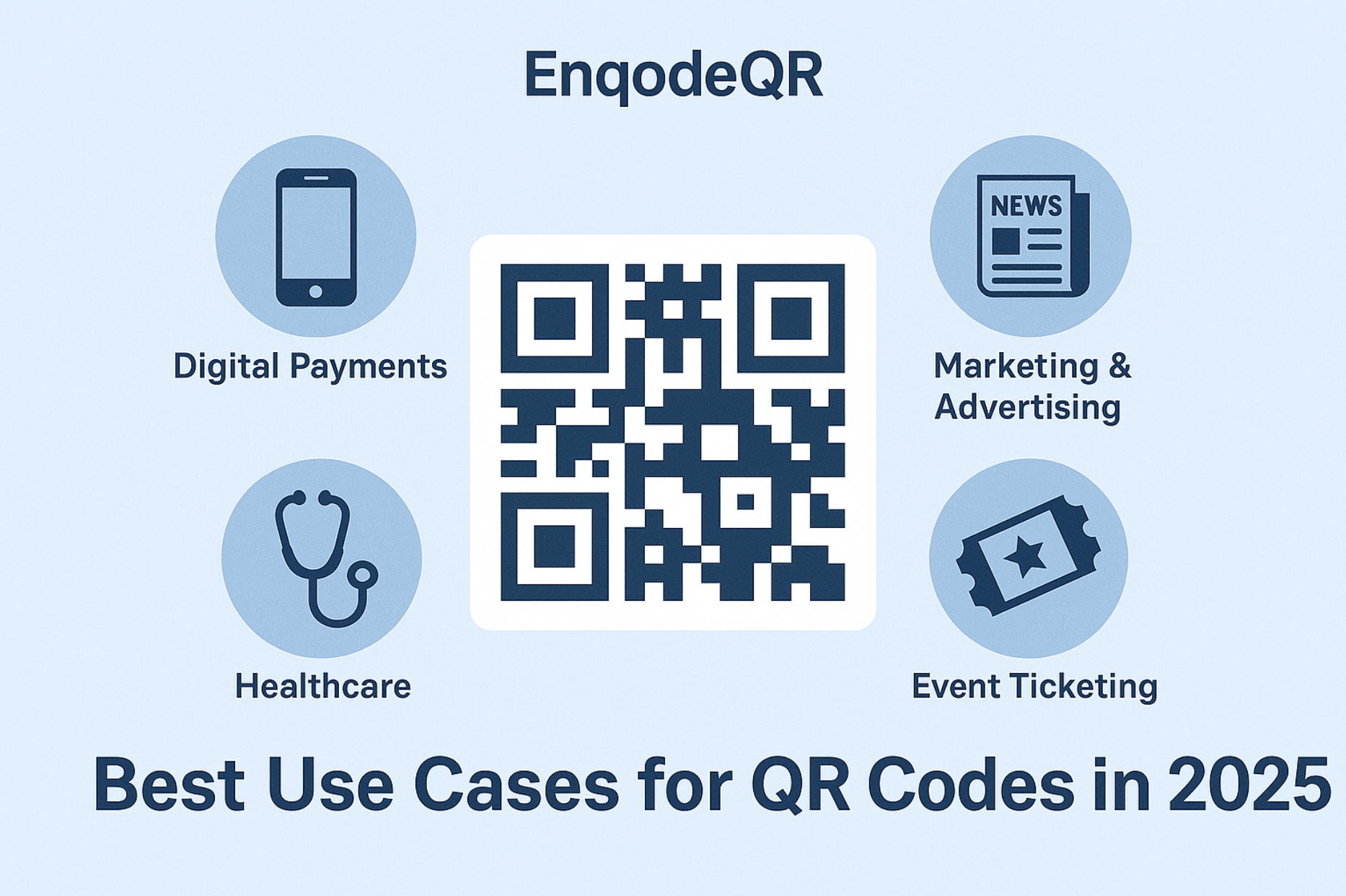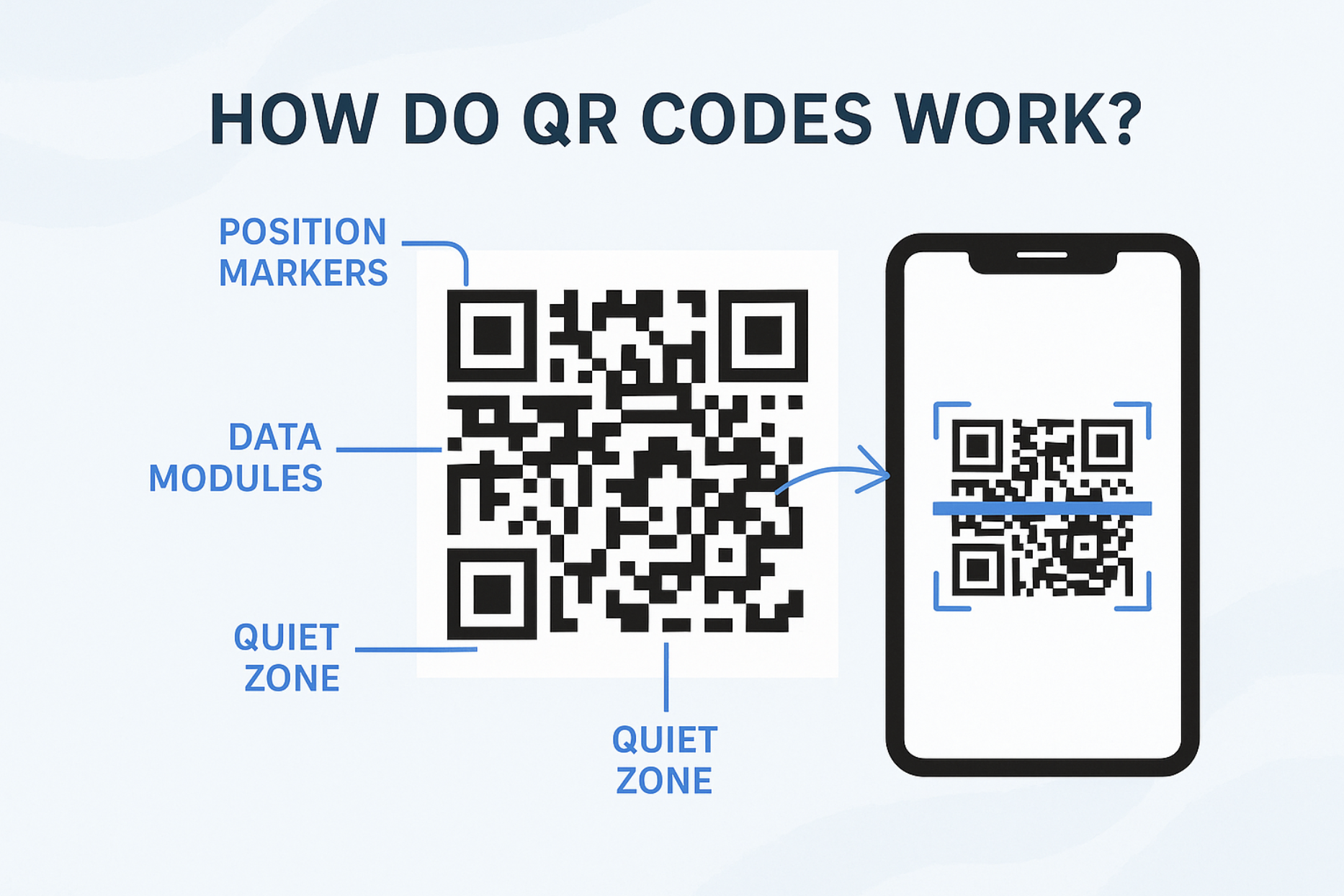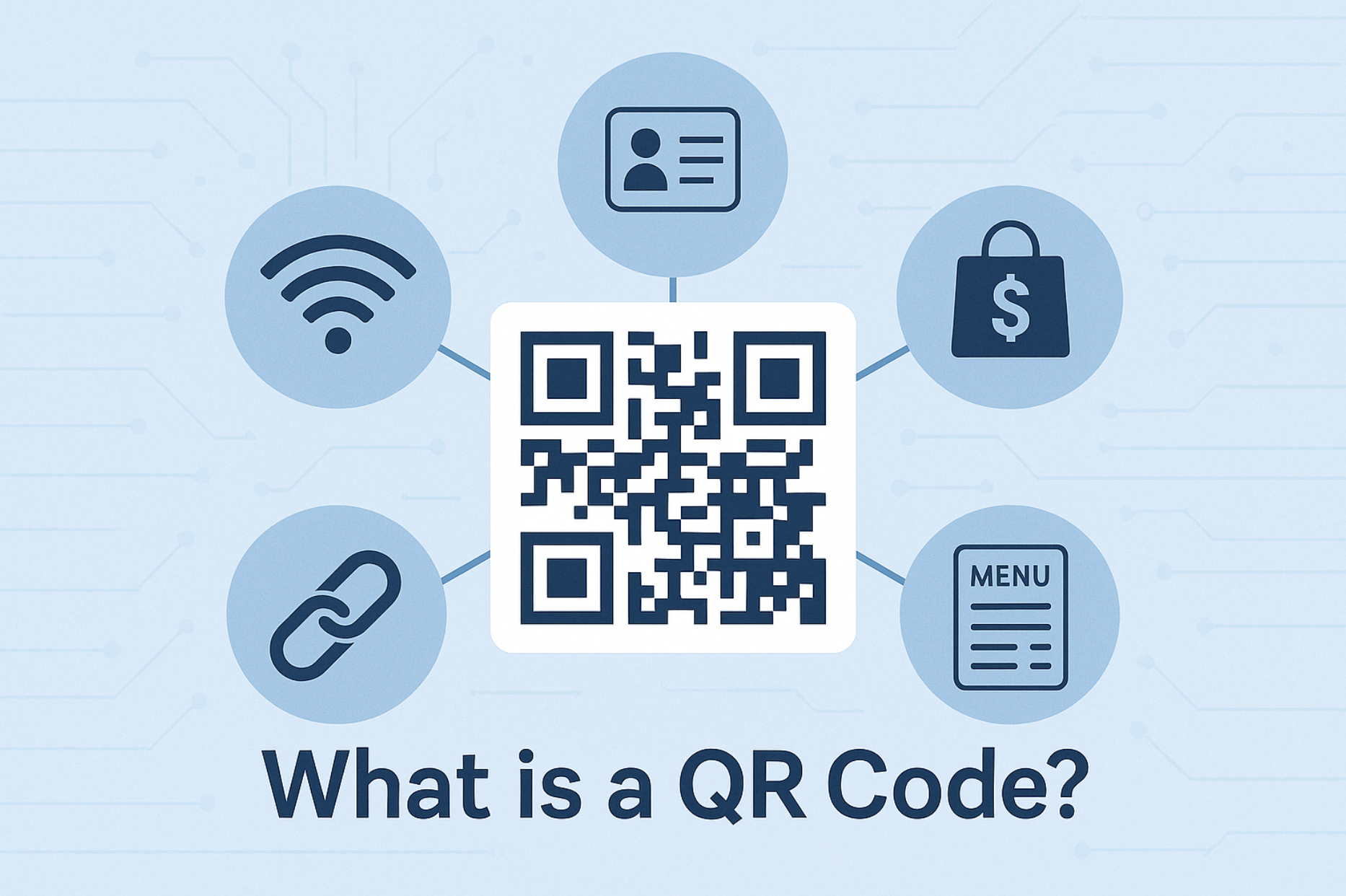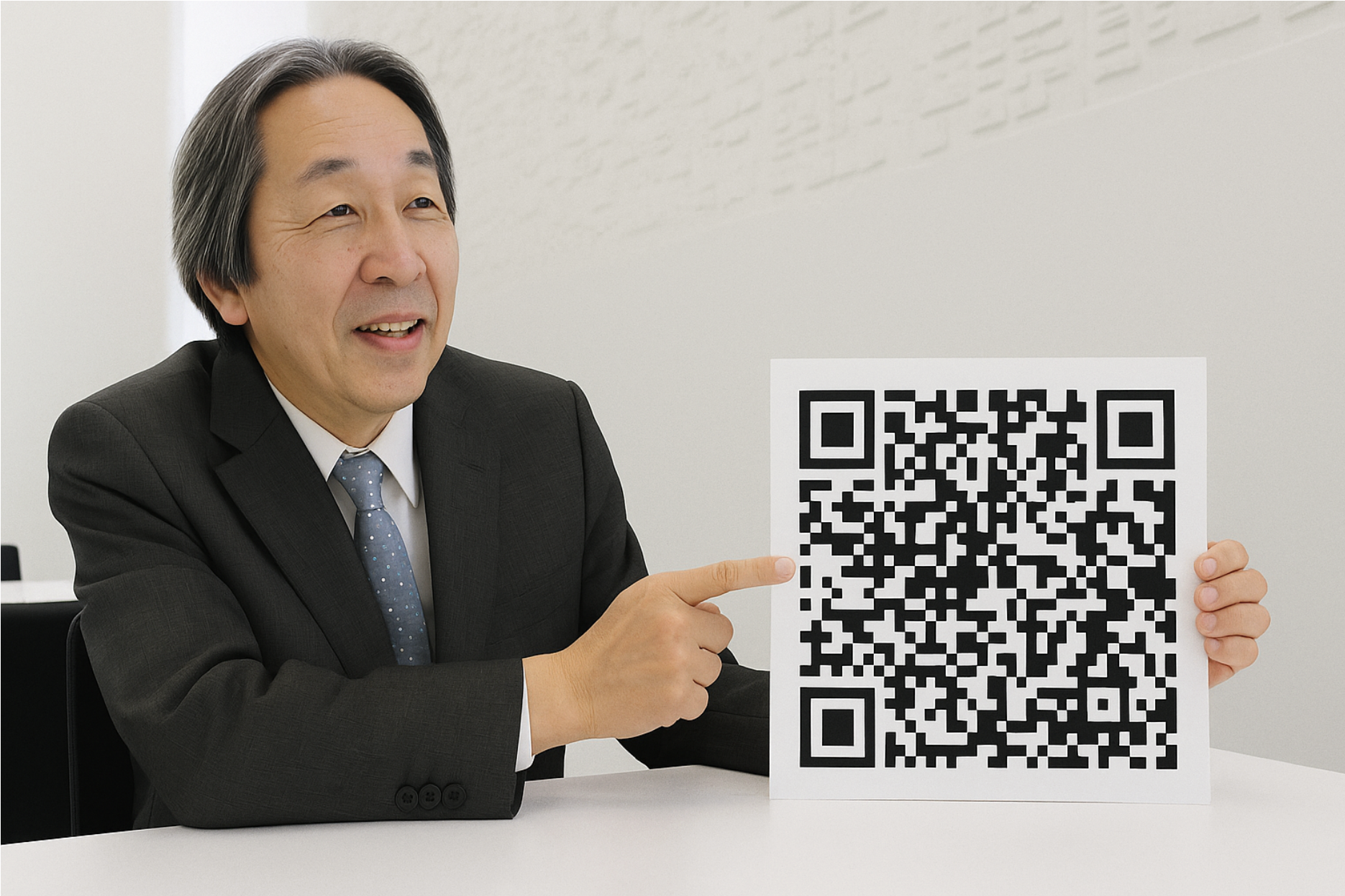Quick Summary
Static QR codes store fixed information directly in the code, while dynamic QR codes use redirects that can be edited and tracked. This guide explains the key differences, benefits, and ideal use cases for each type to help you choose the right QR code solution for your needs.
Table of Contents
Introduction
Not all QR codes are created equal. When creating a QR code, one of the first decisions you'll make is whether to generate a static or a dynamic QR code. But what does that actually mean? And how does it impact functionality, flexibility, and performance?
In this guide, we'll walk you through the core differences between static and dynamic QR codes, when to use each, and how tools like Enqode QR empower you to make the right choice.
What is a Static QR Code?
A static QR code is a fixed QR code that stores information directly in the code itself. Once generated, the content of the code cannot be changed or updated.
Common Examples:
- A URL to your homepage
- Your contact details
- A product ID or coupon code
Pros of Static QR Codes:
- Free to generate - No ongoing costs
- Perfect for permanent data - Good for unchanging information
- Works offline - Doesn't rely on platform redirects
Cons of Static QR Codes:
- Not editable once created
- No tracking or analytics
- Longer URLs create complex patterns (harder to scan)
Static codes are ideal for basic, one-time use cases where you don't need to track performance or change the destination later. Learn more about the basics in our guide what is a QR code.
What is a Dynamic QR Code?
A dynamic QR code doesn't store the actual content directly in the code. Instead, it stores a short redirect URL (hosted on a platform like Enqode QR), which can be updated anytime. This makes dynamic codes editable, trackable, and much more powerful.
Common Examples:
- Marketing campaigns
- A/B testing landing pages
- Personalized content delivery
Pros of Dynamic QR Codes:
- Editable even after printing - Update destinations anytime
- Track scans (location, device, time)
- Supports short, scannable URLs
- Enables advanced features (password protection, expiration)
Cons of Dynamic QR Codes:
- Requires a QR code platform
- Needs internet access for redirection
- May require subscription (depending on provider)
Dynamic QR codes are perfect for marketers, businesses, and anyone who wants performance insights or flexibility. Discover more about their capabilities in our dynamic QR code features guide.
Side-by-Side Comparison Table
| Feature | Static QR Code | Dynamic QR Code |
|---|---|---|
| Editable | ❌ No | ✅ Yes |
| Trackable | ❌ No | ✅ Yes |
| Data stored | In the code itself | On a remote URL |
| Flexibility | Limited | High |
| Scan simplicity | Depends on data size | Always short & clean |
| Use cases | Basic info, contact | Campaigns, analytics |
| Cost | Free | Platform dependent |
Which QR Code Should You Use?
Choose Static QR Codes if:
- Your content will never change
- You don't need scan tracking
- You want a lightweight option for simple needs
- Budget is a primary concern
Choose Dynamic QR Codes if:
- You want to edit destination later
- You need analytics and performance data
- You plan marketing or customer journeys
- You want advanced security features
If you're still unsure, start with dynamic – it gives you room to grow. Learn about the marketing advantages in our guide on dynamic QR code marketing benefits.
How Enqode QR Helps
Enqode QR makes creating and managing both static and dynamic QR codes easy:
- Create static codes instantly with or without an account
- Generate dynamic QR codes with editable destinations
- Access comprehensive analytics (location, device, time)
- Organize campaigns and group QR codes
- Customize designs and branding
We give you the control and insight to scale your QR strategy with confidence. Explore practical applications in our best use cases for QR codes guide.
Frequently Asked Questions
Can I convert a static QR code to dynamic?
No, you cannot convert a static QR code to dynamic after creation. Static codes have the data embedded directly in the pattern, while dynamic codes use redirect URLs. You'll need to generate a new dynamic QR code and replace the static one.
Do dynamic QR codes work without internet?
Dynamic QR codes require internet connection to function because they rely on redirect servers to route users to the correct destination. Static QR codes work offline since the data is stored directly in the code.
Which type is better for marketing campaigns?
Dynamic QR codes are significantly better for marketing campaigns because they provide scan analytics, allow destination changes without reprinting materials, and support A/B testing of different landing pages.
Are static QR codes more secure than dynamic ones?
Both types have security considerations. Static codes are more predictable but can't be updated if compromised. Dynamic codes offer better control through features like password protection and expiration dates, but depend on the security of the hosting platform.
How much do dynamic QR codes typically cost?
Dynamic QR code pricing varies by provider and features needed. Many platforms offer free tiers with basic functionality, while advanced features like detailed analytics, custom branding, and bulk generation typically require paid plans ranging from $5-50+ per month.
Can I track static QR code scans?
Static QR codes cannot be tracked directly since they don't use redirect servers. However, if your static QR code points to a website, you can track visits using web analytics tools like Google Analytics.
Conclusion
The difference between static and dynamic QR codes isn't just technical - it affects how much value you get from your QR marketing strategy. Static codes work well for simple, permanent applications, while dynamic codes excel in business environments requiring flexibility and insights.
Understanding these QR code types helps you make informed decisions that align with your goals and budget. Whether you need something simple and permanent, or smart and adaptable, choosing the right type maximizes your return on investment.
With platforms like Enqode QR, you're equipped with the right tools to deliver meaningful results regardless of which type you choose. Ready to get started? Learn more about how QR codes work or explore QR code security best practices.


